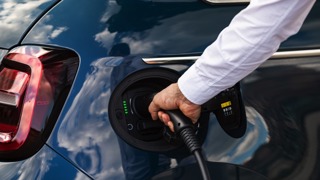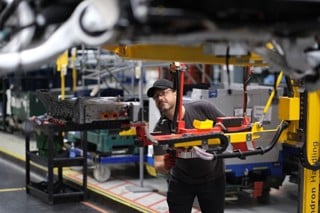The European Commission's latest car price report shows that car prices fell by 2.5% in real terms in 2010 in the European Union as a whole, while list prices for new cars also converged slightly.
These long-term price trends support the Commission's decision last year that specific competition rules for the sale of new cars are no longer justified.
"It is good to see that consumers in Europe are benefitting from competition in the markets for new car sales and continue to enjoy significantly falling prices in real terms,” said Joaquín Almunia, Commission Vice President in charge of competition policy.
“The fact that price differentials between Member States narrowed further is a positive indicator of cross-border competition. I am also delighted to see that for the first time in a decade, real EU-wide prices for repair and maintenance services stopped increasing, a sign that the sector has understood the new rules of the game"
Overall, price differences for passenger cars between Member States decreased, as expressed in manufacturers' price lists. But the differences remain big in some cases pointing to large savings for consumers shopping across borders. Within the euro zone, the price difference indicator remained unchanged.
The EU price index for cars, reflecting nominal prices paid by consumers, including rebates, VAT and registration taxes, increased by 0.3% against a 2.8% rise in overall consumer prices, translating into a fall in real car prices by 2.5%.
A total of 24 EU countries recorded a fall in real car prices. Prices were stable in another two countries (+0.2% in both Italy and Malta) while they increased in Portugal (+2.6%).
In the latter case, however, it should be noted that buyers benefited from a greater-than-average fall in real car prices the previous year (-6.7%).
The fall in real prices was particularly marked in Slovakia (-17.4%), Bulgaria (-13.5%), Slovenia (-11.6%) and the Czech Republic (-9.0%). In Poland they decreased by 5.6%. Among the large markets, real prices decreased most notably in the UK ( 3.7%), while Germany, Spain and France experienced more moderate price reductions (-1.9%, -1.6% and -0.9% respectively).
The fall in real car prices across the EU continues a trend observed for more than a decade, which indicates that competition between car manufacturers on the market for new cars is working.
Year-on-year change in price index and real car prices in %
(January 2011 compared with January 2010)
|
Euro Zone
countries |
Nominal Car Price
|
Headline inflation
|
Real Car Prices
|
|
Austria
|
0.9
|
2.5
|
-3.4
|
|
Belgium
|
0.7
|
3.7
|
-3.0
|
|
Cyprus
|
-1.6
|
3.0
|
-4.5
|
|
Estonia
|
-0.1
|
5.1
|
-5.2
|
|
Finland
|
1.2
|
3.1
|
-1.9
|
|
France
|
1.1
|
2.0
|
-0.9
|
|
Germany
|
0.1
|
2.0
|
-1.9
|
|
Greece
|
1.1
|
4.9
|
-3.8
|
|
Ireland
|
-5.5
|
0.2
|
-5.7
|
|
Italy
|
2.1
|
1.9
|
0.2
|
|
Luxembourg
|
0.9
|
3.4
|
-2.5
|
|
Malta
|
3.5
|
3.3
|
0.2
|
|
Netherlands
|
-1.7
|
2.0
|
-3.7
|
|
Portugal
|
6.2
|
3.6
|
2.6
|
|
Slovakia
|
-14.2
|
3.2
|
-17.4
|
|
Slovenia
|
-9.3
|
2.3
|
-11.6
|
|
Spain
|
1.4
|
3.0
|
-1.6
|
|
Euro zone
|
0.8
|
2.3
|
-1.5
|
|
Countries outside the Euro zone
|
Nominal Car Prices
|
Headline inflation
|
Real Car Prices
|
|
Bulgaria
|
-9.2
|
4.3
|
-13.5
|
|
Czech Republic
|
-7.1
|
1.9
|
-9.0
|
|
Denmark
|
-1.0
|
2.6
|
-3.6
|
|
Estonia
|
-0.1
|
5.1
|
-5.2
|
|
Hungary
|
-2.5
|
4.0
|
-6.5
|
|
Latvia
|
-2.6
|
3.5
|
-6.1
|
|
Lithuania
|
-4.4
|
2.8
|
-7.2
|
|
Poland
|
-2.1
|
3.6
|
-5.6
|
|
Romania
|
4.7
|
7.0
|
-2.3
|
|
Sweden
|
0.3
|
1.4
|
-1.1
|
|
United Kingdom
|
0.3
|
4.0
|
-3.7
|





















Login to comment
Comments
No comments have been made yet.